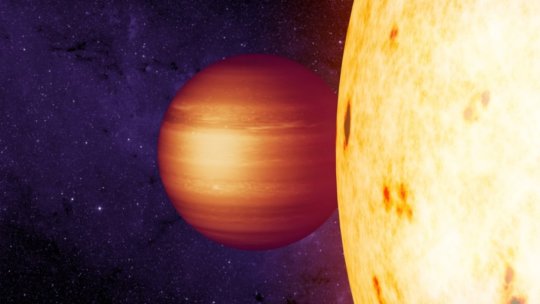The hottest point on a gaseous planet near a distant star isn't where astrophysicists expected it to be a discovery that challenges scientists' understanding of the many planets of this type found in solar systems outside our own.
Unlike our familiar planet Jupiter, so-called hot Jupiters circle astonishingly close to their host star so close that it typically takes fewer than three days to complete an orbit. And one hemisphere of these planets always faces its host star, while the other faces permanently out into the dark.
Not surprisingly, the "day" side of the planets gets vastly hotter than the night side, and the hottest point of all tends to be the spot closest to the star. Astrophysicists theorize and observe that these planets also experience strong winds blowing eastward near their equators, which can sometimes displace the hot spot toward the east.
In the mysterious case of exoplanet CoRoT-2b, however, the hot spot turns out to lie in the opposite direction: west of center. A research team led by astronomers at McGill University's McGill Space Institute (MSI) and the Institute for research on exoplanets (iREx) in Montreal made the discovery using NASA's Spitzer Space Telescope. Their findings are reported Jan. 22 in the journal Nature Astronomy.
Wrong-way wind
CoRoT-2b, discovered a decade ago by a French-led space observatory mission, is 930 light years from Earth. While many other hot Jupiters have been detected in recent years, CoRoT-2b has continued to intrigue astronomers because of two factors: its inflated size and the puzzling spectrum of light emissions from its surface.
New questions
The researchers offer three possible explanations for the unexpected discovery – each of which raises new questions:
· The planet could be spinning so slowly that one rotation takes longer than a full orbit of its star; this could create winds blowing toward the west rather than the east – but it would also undercut theories about planet-star gravitational interaction in such tight orbits.
· The planet’s atmosphere could be interacting with the planet’s magnetic field to modify its wind pattern; this could provide a rare opportunity to study an exoplanet’s magnetic field.
· Large clouds covering the eastern side of the planet could make it appear darker than it would otherwise – but this would undercut current models of atmospheric circulation on such planets.
